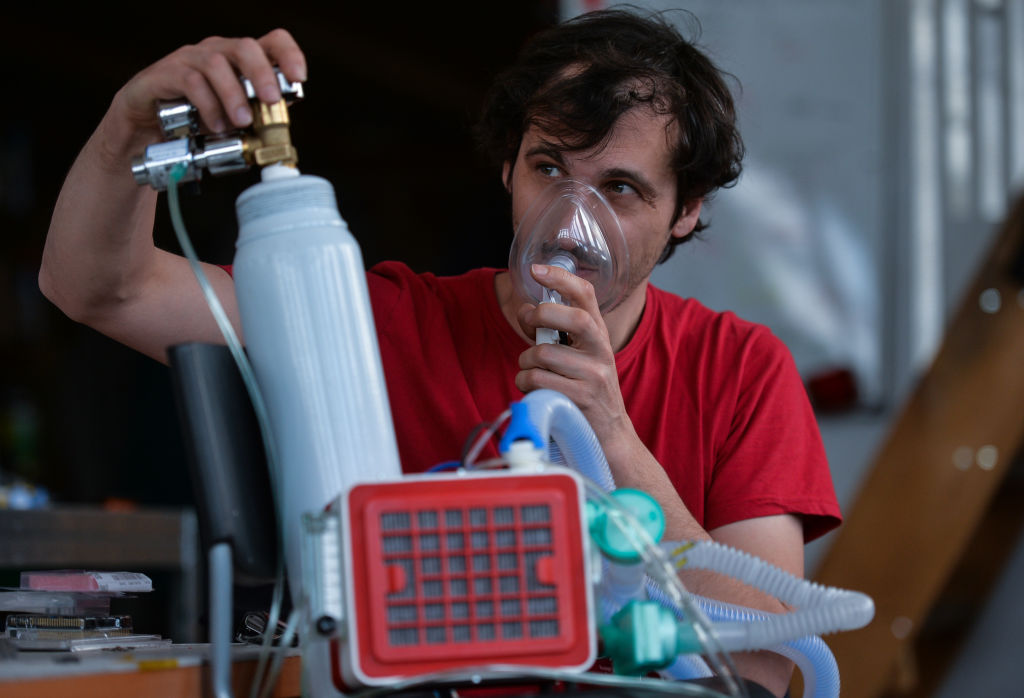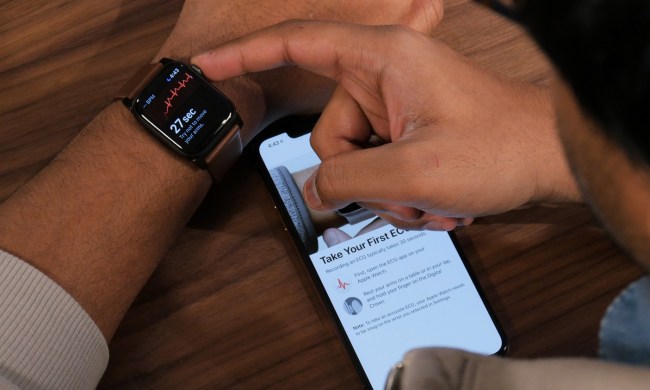
It’s impossible to say no one saw a pandemic coming. In December 2007, a user of the how-to site Instructables uploaded plans for “The Pandemic Ventilator,” a do-it-yourself machine made out of plywood, plastic bags, threaded pipe, and a programmable logic controller (PLC).
“If a pandemic were to strike, the hospitals could not just go out and buy all the ventilators they need, because there would not be enough parts or manufacturing capability,” warned a user named Panvent, who at the time was expecting an outbreak akin to the avian flu.
Fast forward 13 years and the Pandemic Ventilator seems prescient. The U.S. national stockpile doesn’t have enough vents to support all of the states that need them; many of the ones in it are broken, and as they hunt for a cure, governors are rapidly discussing various ideas for alternative ventilators, including hacking anesthesia machines and hand pumping bag valve masks. One hospital in Italy even transformed scuba masks into personal oxygen machines for several patients.
In America, states like Arkansas and Florida are still trying to figure out of they have enough machines in preparation for a surge and President Donald Trump has blamed numerous governors for not being prepared. Having an extra ventilator on hand seems like a good idea. Should you build or hack your own?
A basic machine with a lot of bells
“At its essence, a ventilator is a pretty basic machine,” explains Randy Cremer, Director of Biomedical Equipment Engineering at New Jersey’s Deborah Heart and Lung Center. “It’s just something that will create pressure that’s a little higher than the lung pressure, so it will force you to take a breath.”
The creator of the Pandemic Ventilator Project (PVP) seems to agree. Now an engineer at a startup developing a wearable dialysis system, this anonymous biomedical technologist has continued to develop schematics for his pet project, posting them on a Blogspot site, along with a discussion of the experiments and tangents the project has taken over the past several years.
The many ways to make a ventilator
If you’re interested in making a DIY ventilator, you may want to take a look at this Github project page. It includes a spreadsheet that reviews 85 machines for their viability. Top candidates include the AmboVent, designed by the Israeli Air Force, and the Automated Bag Valve Mask, developed by students from Rice University for a price tag that comes in below $300.
Fans of 3D printing may want to check out the ArmeeVent project — a 1960s-era U.S. Army “Automatic Respiration Management” machine that has no moving parts and has recently been reverse-engineered. Anyone following the ventilator drama in the early stages of the pandemic probably saw the headlines that hundreds to thousands of machines in the national stockpile are broken. Why? Ventilators are often pneumatic machines with valves, solenoids, and diaphragms, explains Cremer. These parts can dry out and get brittle, and need to be replaced. Onboard electronics may fail. A vent with no moving parts can theoretically get around some of the issues that come with age.
However, if you need to scale up production on a short timeline, which is the current need, printing or building a ventilator from scratch is probably not the way to go. Most of these machines need to be Food and Drug Administration-approved, and using one that hasn’t been tested for safety can have serious consequences.
The danger of DIY
“I’m really leery of these DIY things,” says Cremer. “The problem with making a machine that simple is when something goes wrong. If that machine continues to give a pressure to a patient that can’t take it, you can cause further damage.” Even a top-of-the-line oxygen machine needs a medical team to dial in the right numbers for a patients’ lung capacity. An advanced ventilator used in an ICU will often have an alarm to alert a nearby nurse or doctor when a patient is struggling with the airflow.
While some of the proposed DIY projects have similar sensors, there are legal considerations as well.
“As a manager, I also deal with regulatory issues,” explains Cremer “There’s the whole FDA and patient safety issue.” Even the best DIY ventilator would likely need FDA approval to be utilized in a hospital.

To simplify things, some strategists suggest hacking anesthesia machines, which are already in hospitals and have on-board ventilators in case they’re needed during surgery. Most will only require minor adjustments.
That approach, however, also gets into dicey territory. Cremer says the manufacturer of the anesthesia apparatuses used at the Deborah Heart and Lung Center has already issued a statement warning that if any of the medical devices are turned into full-time ventilators, the use would be considered “off label” and the hospital would be responsible for any resulting patient problems.
Anesthesia machine ventilators aren’t designed to be used for the weeks- or months-long period that a COVID-19 patient often requires, says Cremer. “They’re only meant to be used for hours, or to have a surgical procedure.”
An FDA-approved hack?
A team of California physicians and engineers from University of California, Berkeley, and University of California, San Francisco, has a hack the FDA has already stated won’t need emergency approval. Concerned about the ventilator shortage, engineer Bryan Martel wondered if a CPAP machine could be modified to help COVID-19 patients. Martel suffers from sleep apnea and has one of the breathing support devices at home. He quickly extended the concept to BIPAP machines, which are also used to treat sleep apnea and deliver a pressured airflow.

“There’s millions of these devices already out there,” explains Dr. Ajay Dharia, one of Martel’s partners on the Ventilator SOS project. “If we can figure out a way to repurpose them, we’re a good way to getting them to clinical use. The machines are already built, so you don’t have to manufacture anything.”
Dharia says ventilators should still be a top priority, but the team’s CPAP and BIPAP machines can potentially be used to support patients who still need pressurized oxygen and aren’t in immediate need of a more advanced device.
While Dharia spends much of his time as the principal of Med Tech Venture Partners, which focuses on funding early-stage medical devices, he still sees patients (in Kaiser Permanente and Sutter hospitals) and is concerned about how quickly the lung capacity of COVID-19 patients can decline.

“We’re seeing people come in — even young people — and when they come in they’re on minimal support. Over 24 hours, they’re on maximal support, so they deteriorate remarkably quickly,” says Dharia. On the positive side, many of these patients’ lungs don’t get too stiff and respond well to air pressure.
“With more compliant lungs, you can get by with a little bit less pressure,” says Dharia. “That actually works to the advantage of the BIPAP and CPAP machines for sure, which can deliver extremely high pressures.”
The Ventilator SOS team adjusts these machines by adding an attachment for an endotracheal tube, using parts that are readily available in most hospitals. They’ve also modified the machinery to deliver high amounts of oxygen, which may be necessary with some patients.
In addition to publicly posting the plans for the CPAP/BIPAP modification for anyone to use, the team is also requesting people who have one of these machines they’re not using to donate them for refashioning and distribution to needy hospitals.
Cremer agrees that utilizing CPAP and BIPAP machines makes more sense than many of the DIY options. He also sees a way to utilize some DIY knowhow: 3D printing parts for old ventilators. He says there are stockpiles of out-of-commission breathing machines that can be brought back to life with a newly printed valve or other part.
“That’s what the 3D-printing community should be focusing on — printing parts for those things,” says Cremer. “Instead of coming up with these new projects, that’s the safer thing to do.”
As for the DIY projects, his bar for using them remains high: “At the end of the day, if it’s a zombie apocalypse kind of thing — yeah — but I don’t think we’re there yet.”



